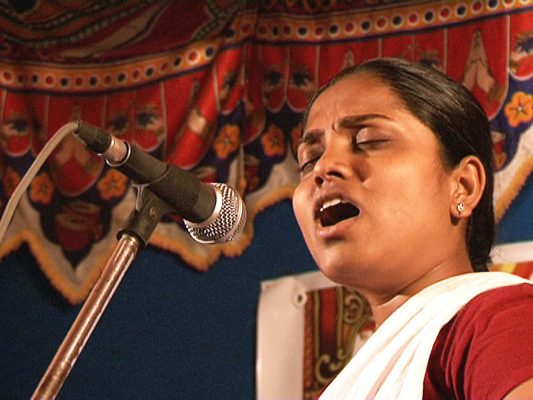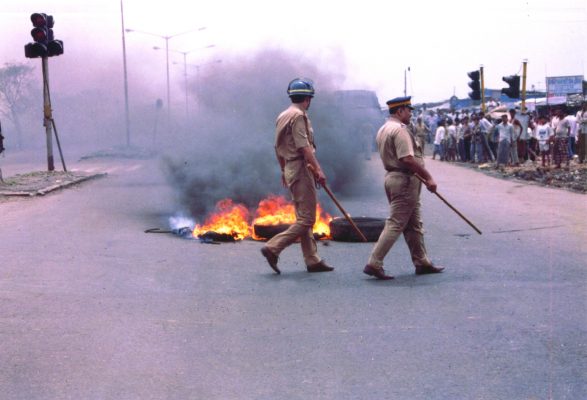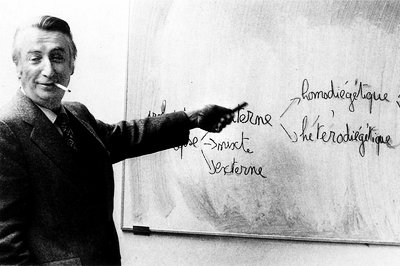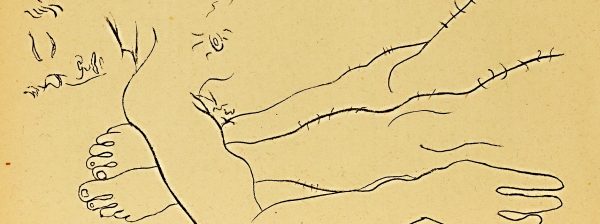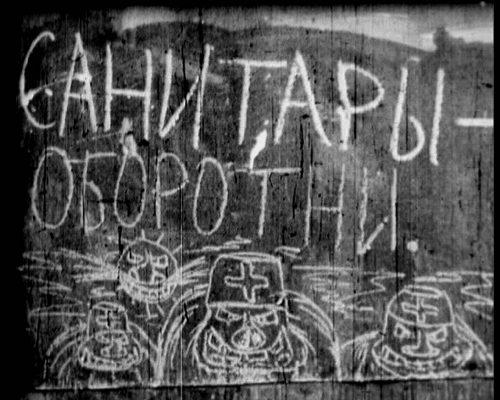By the late 1990s a right wing government in the shape of a BJP-Shiv Sena alliance had come to power for the first time in the Indian State of Maharashtra. The Shiv Sena: a militant party that formed in the 70s primarily to oppose the forming of immigrant labour unions and continues to carry out attacks on South Indians and Muslims; and the BJP: a populist party with a broad national reach. Their alliance would carry till 2014. On 11 July 1997, members of India’s Rapid Action Police Force opened fire on a crowd of unarmed Dalit protesters in Mumbai’s Ramabai Ambedkar Nagar Colony, killing 10 and
injuring 26.
‘Dalit’, which has come to mean ‘the oppressed’, is the term adopted by those who over thousands of years have been treated as ‘untouchable’ by the Hindu caste system. The term ‘Dalit’ was espoused by Dr. B.R. Ambedkar (1891-1956), an economist, lawyer, and pivotal architect of India’s constitution following Independence. He was a Dalit himself, and led several social reform movements on behalf of the ‘untouchables’. Ambedkar disavowed Gandhi’s name for the group, Harijan, or ‘people of God’, in part because it enveloped a diverse community into the larger project of the Hindu nation-state. Among Ambedkar’s political strategies for Dalit resistance against state fundamentalism was the mass conversion of his followers to Buddhism. For Ambedkar and his followers, to fully shed caste required the total disavowal of Hinduism.
At Ramabai Colony, Dalit residents had been protesting the desecration of a local Ambedkar statue. They had surrounded a local police station in Pantnagar, before the police fired into the crowd. Within days of the massacre at Ramabai, Vilas Ghogre, a beloved poet-singer and organiser of Dalit labourers in the slums close to Ramabai, committed suicide. Filmmaker Anand Patwardhan’s 2011 documentary, Jai Bhim Comrade, begins at this tragic intersection and expands outward, examining the pervasive forces of caste discrimination and caste-based violence in India, their infiltration into class dynamics, notions of nationhood, and the possibility of a Dalit-Left unity in India.
Vilas Ghogre, a Dalit who combined Ambedkarite politics with Marxism, was known to Patwardhan as they had organised on the ground in support of the homeless in the 80s. Ghogre’s music is a leitmotif in Patwardhan’s film, Bombay, Our City (1985). In Jai Bhim Comrade, Ghogre’s presence is palpable – it both anchors and fuels Patwardhan’s probing examination of the vicissitudes of the Dalit struggle.
As history has shown, when Dalit assertion garners greater public attention, it also leads to reactionary violence from upper caste people that fear the erosion of their own power and privilege. In 2016, in a village in Gujarat – the home state of current BJP Prime Minister Narendra Modi – seven members of a Dalit family were tied to the rear of a car and beaten. The incident became widespread knowledge because it was broadcast, by the perpetrators of the crime themselves, on social media. While Jai Bhim Comrade begins on the eve of the new millennium, its resonance is striking today, as the rise of fascist tendencies – both in India and across the world – underscore of the importance of resistance.
What follows is a conversation with Anand Patwardhan, conducted over the phone and via email shortly after the screening of Jai Bhim Comrade, which ran at the MoMA, New York, from 1–7 June 2018. The film, which clocks in at over three hours, is deeply engrossing and polemic in its refusal to provide its viewers with definite answers. Leaving the MoMA, I thought about how Patwardhan had screened the film, shortly after its release, to an audience in Ramabai Colony. The distance between that audience, that time, and that location from my own experience of viewing the film seemed to me a vast, insurmountable gulf, only furthered by the fact that I personally had no experience of the caste system.
Over the course of a month, I was able to speak with Patwardhan about the film and its relevance to a society still firmly governed by caste, and specifically by caste discrimination. In his communications, Patwardhan was generous with his answers and my many follow-up questions, as we unpacked, bit by bit, the many facets of Vilas Ghogre’s story, his relationship to Vilas, and the broader implications of right-wing fundamentalism on the Dalit empowerment movement.
As with Patwardhan’s films, this conversation attempts to elucidate, but it is by no means conclusive: our perspectives are offered here as a means for further complicating the narrative of Dalit and Marxist resistance within the context of India’s current political climate.
